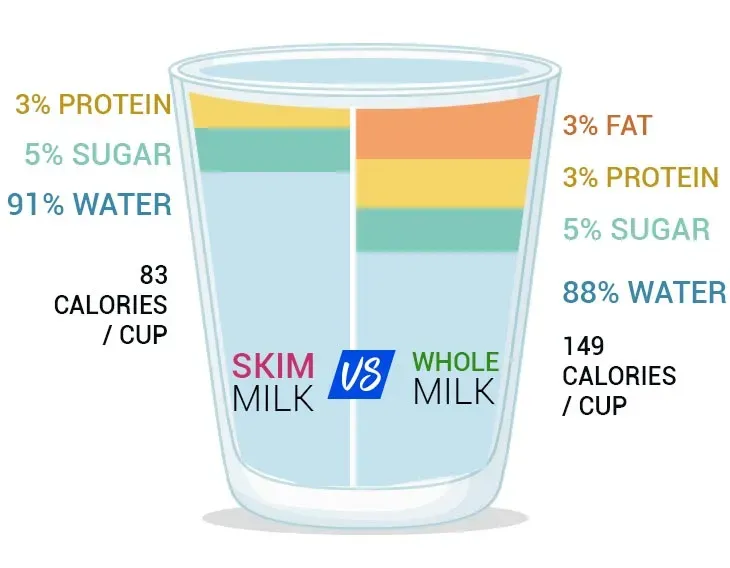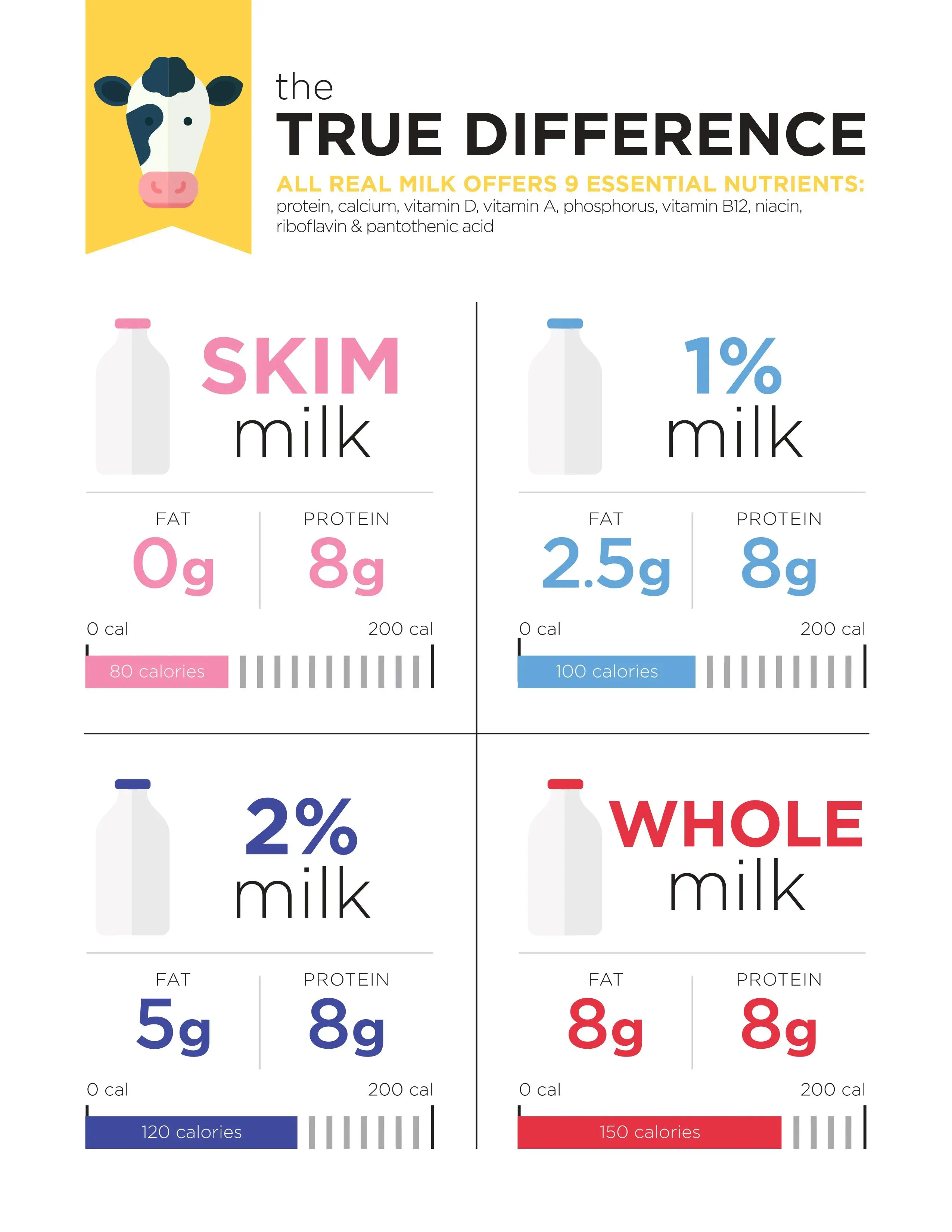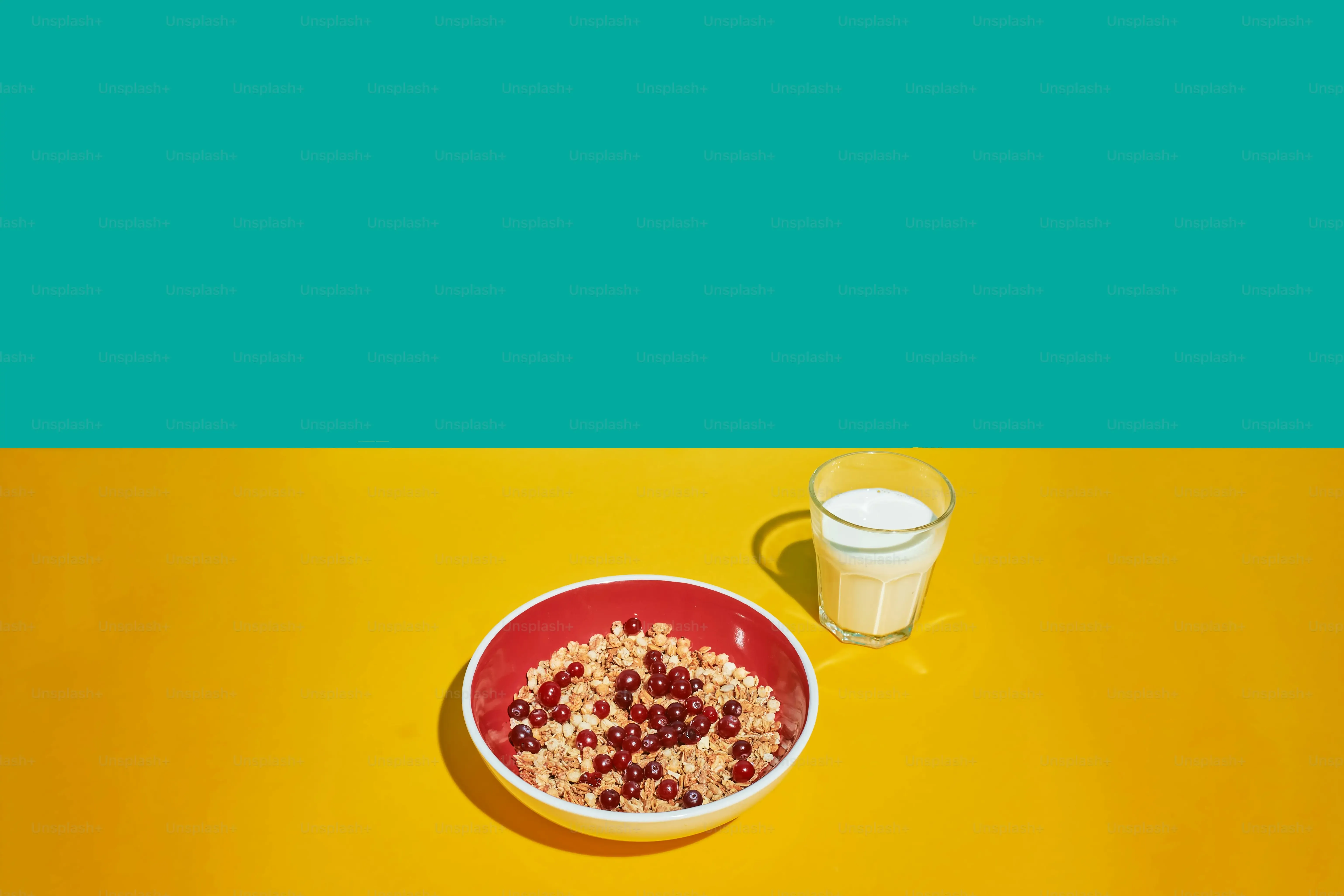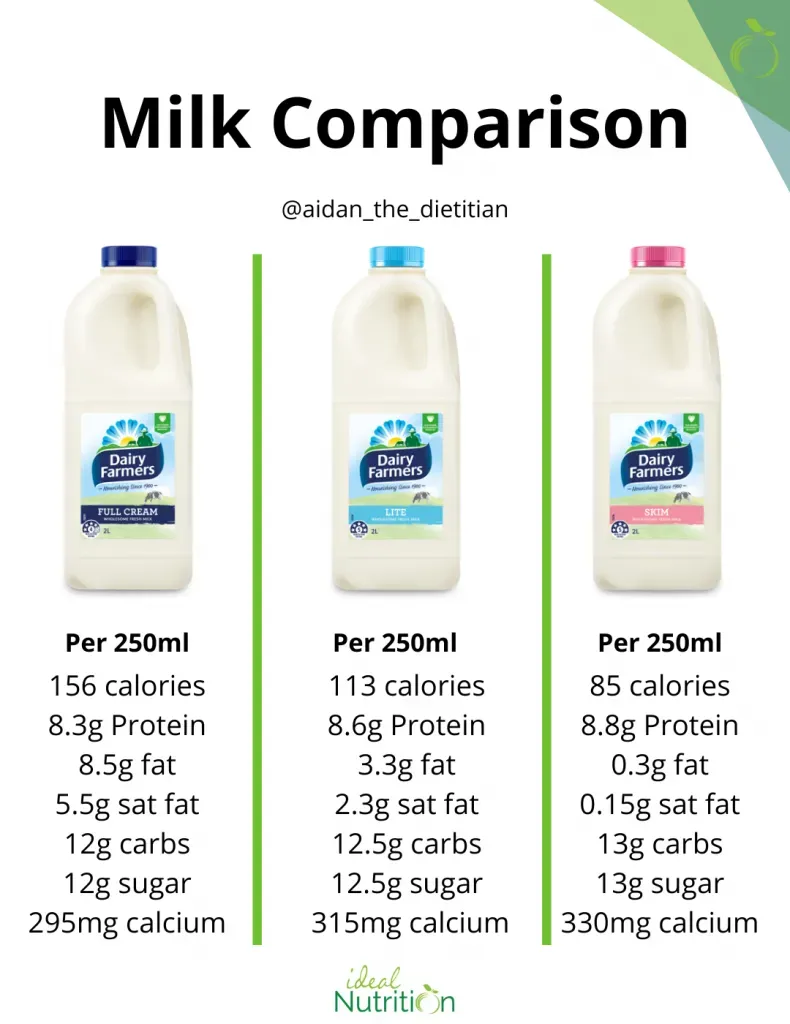Table of Contents
Walk down the dairy aisle and you're faced with options: whole milk, 2%, 1%, and then there's low-fat and skimmed. It's enough to make your head spin, especially when trying to figure out what's what. A question that often pops up is, is skimmed milk the same as low fat? Many people use the terms interchangeably, assuming they're buying the same thing, just with different labels. But here's the reality: while both are lower in fat than whole milk, they aren't identical twins. They have distinct differences that go beyond just the name on the carton. This article will clear up the confusion, diving into the specific fat percentages, how they stack up nutritionally, and even how they feel and taste. By the end, you'll know exactly what you're pouring into your coffee or cereal and understand why these seemingly similar options actually stand apart.
Is Skimmed Milk the Same as Low Fat Milk? The Core Difference
Is Skimmed Milk the Same as Low Fat Milk? The Core Difference
It's All About the Numbers (The Fat Numbers, That Is)
Let's cut straight to the chase because the question, is skimmed milk the same as low fat milk, deserves a clear answer. No, they are not the same. The fundamental difference boils down to one thing: the amount of milk fat left in the liquid after processing. Think of whole milk as the starting point, containing around 3.25% fat. Everything else is a variation on how much of that creamy stuff gets removed. Low-fat and skimmed are both products of this fat-removal process, but they stop at different points along the way.
Defining Skimmed and Low-Fat by Percentage
So, what are those different points? "Low-fat" milk in the U.S. typically refers to milk with either 1% or 2% milk fat by weight. The carton will usually specify which one it is. "Skimmed milk," also often called "fat-free milk," is the one where almost all the fat has been removed. By regulation, skimmed milk must contain less than 0.5% milk fat. Often, it's closer to 0.1% or 0.2%. That might sound like a tiny difference between 0.5% and 1%, but it's significant when you're talking about fat content relative to the original whole milk.
Milk Type | Approximate Fat Content |
|---|---|
Whole Milk | 3.25% |
2% Milk | 2% |
1% Milk | 1% |
Skimmed (Fat-Free) Milk | Less than 0.5% (often 0.1-0.2%) |
Why the Naming Matters
This distinction in fat percentage is why the labeling exists. It's not just marketing jargon; it's a regulated standard. When you grab a gallon labeled "Skim" or "Fat-Free," you're supposed to get a product with minimal fat. If it says "Low-Fat," you know you're getting something with 1% or 2% fat. It seems simple enough, yet I still see people staring at the options, genuinely confused if "skim" and "1%" are just different words for the same thing. They aren't. It's like assuming a quarter mile is the same distance as half a mile because both are "less than a mile." The difference is specific and measured.
Breaking Down the Fat Content: Skimmed vs. Low Fat
Breaking Down the Fat Content: Skimmed vs. Low Fat
The Nitty-Gritty of Fat Percentage
Alright, let's really get into the specifics of this whole "is skimmed milk the same as low fat" puzzle, focusing purely on the fat numbers. As we touched on, it's a game of percentages, and even small differences here create distinct products. When milk goes through processing to reduce fat, centrifugal force spins the lighter fat away from the heavier liquid. Whole milk is the baseline, holding onto most of its natural fat. To get to low-fat, processors remove enough fat to hit either the 2% or 1% mark. Think of it like dialing down a knob – you're reducing the fat, but you're not turning it all the way off. Skimmed milk, on the other hand, is when they crank that knob as far as it goes, stripping out virtually all the fat, leaving less than 0.5%, often closer to 0.1%. That might sound like splitting hairs, but that remaining fat, or lack thereof, changes more than just the number on the label.
What That Fat Difference Means in Practice
So, beyond the decimal points, what does this fat content difference actually mean for the milk itself? The fat globules in milk are what give it richness, body, and a certain mouthfeel. When you remove fat, you remove some of that. 2% milk still retains a noticeable creaminess compared to skim. 1% is a step further down, feeling lighter than 2%. Skimmed milk, with its near-zero fat content, feels significantly thinner and less rich. This isn't just about texture; fat carries flavor compounds. Less fat often means a less robust, sometimes slightly watery taste. It's the reason people often have strong preferences – some find skimmed milk too thin and lacking flavor, while others prefer its lightness and lower calorie count. It's a direct consequence of how much fat was left behind during the processing.
- Whole Milk: Full fat (approx. 3.25%) - Rich, creamy.
- 2% Milk: Reduced fat (2%) - Less creamy than whole, still has some body.
- 1% Milk: Low fat (1%) - Lighter than 2%, less rich.
- Skimmed Milk: Fat-free (less than 0.5%) - Thinnest texture, least rich flavor.
Beyond Fat: Nutritional Nuances in Skimmed and LowFat Milk
Beyond Fat: Nutritional Nuances in Skimmed and LowFat Milk
Stripping Away More Than Just Creaminess
When processors filter out the fat to make milk low-fat or skimmed, they're not just removing the creamy stuff. Fat is a carrier for certain vitamins, specifically the fat-soluble ones: Vitamins A, D, E, and K. Whole milk naturally contains these. As you reduce the fat content, you naturally reduce the amount of these vitamins present. Think of it like straining pasta – you keep the pasta, but you lose the water and anything dissolved in it. In the case of milk, the "water" is the liquid, and the dissolved bits include these crucial fat-soluble vitamins tied to the fat globules. So, while you're cutting calories and saturated fat, you're also potentially losing some micronutrients.
Fortification: The Nutritional Safety Net
Luckily, milk producers aren't trying to leave you high and dry on the vitamin front. To compensate for the loss of those fat-soluble vitamins during processing, most milk sold in the U.S., including low-fat and skimmed varieties, is fortified. This means vitamins, particularly A and D, are added back in. Vitamin D is especially important because it helps your body absorb calcium, and milk is a major source of calcium for many people. The amount of protein and calcium, by the way, remains largely the same across all milk types, regardless of fat content. So, you still get those muscle-building and bone-strengthening benefits whether you choose skimmed or low-fat milk.
Nutrient (approx. per 8 oz serving) | Skimmed Milk | 1% Low-Fat Milk | 2% Reduced-Fat Milk |
|---|---|---|---|
Calories | 80 | 100 | 120 |
Total Fat | < 0.5g | 2.5g | 5g |
Saturated Fat | < 0.3g | 1.5g | 3g |
Protein | 8g | 8g | 8g |
Calcium | 300mg (23% DV) | 300mg (23% DV) | 300mg (23% DV) |
Vitamin D (Fortified) | 2.4mcg (10% DV) | 2.4mcg (10% DV) | 2.4mcg (10% DV) |
Weighing the Calorie and Vitamin Trade-offs
When you look at the nutritional labels, the primary difference beyond the fat itself is the calorie count. Skimmed milk is the lowest in calories because fat is calorie-dense. Low-fat milk (1% or 2%) has progressively more calories as the fat content increases. While the fortification ensures you get comparable levels of Vitamins A and D in lower-fat options, some argue that naturally occurring vitamins in whole milk might be absorbed differently or that there are other beneficial compounds in milk fat that are lost. For most people, especially those getting a balanced diet, the fortified vitamins in skimmed and low-fat milk are perfectly adequate. The choice often comes down to balancing desired fat intake and calories against taste and texture preferences, rather than a huge nutritional chasm in essential vitamins and minerals like calcium and protein.
Taste and Texture: How Skimmed Milk Differs from Low Fat Options
Taste and Texture: How Skimmed Milk Differs from Low Fat Options
The Slippery Slope of Texture
Let's be honest, when you ask, is skimmed milk the same as low fat, your tongue knows the answer, even if your brain doesn't. The most immediate and noticeable difference isn't the fat percentage number on the carton; it's how the milk feels in your mouth. Fat provides viscosity and coats the palate. Think about whole milk – it feels rich, smooth, and substantial. As you strip away the fat, that feeling diminishes. 2% milk still has some of that creamy body, a decent middle ground. 1% feels noticeably lighter. Skimmed milk, having shed almost all its fat, can feel thin, almost watery, by comparison. It doesn't cling to your tongue the same way. If you've ever accidentally poured skim when you expected 2%, you know that distinct, slightly disappointing lack of substance. It's like expecting velvet and getting polyester.
Where Did All the Flavor Go?
Texture isn't the only casualty when fat is removed. Fat carries flavor compounds, and it also helps to smooth out and round off the overall taste of milk. Without much fat, the inherent sweetness of milk can become more pronounced, and sometimes, other less desirable notes might peek through. Skimmed milk often tastes less "milky" or rich than its higher-fat counterparts. Some describe it as having a slightly blander or even faintly chalky flavor. Low-fat options like 1% and 2% retain more of that classic milk flavor because they still have some fat to work with. It's why switching from whole milk to skim can be a shock to the system; it's not just less creamy, it's a fundamentally different flavor experience. It’s the difference between biting into a buttery scone and a dry cracker – both are baked goods, but one is clearly missing something.
- Whole Milk: Creamy, rich, full-bodied flavor.
- 2% Milk: Smoother texture than skim, good balance of richness and lightness, classic milk taste.
- 1% Milk: Lighter texture than 2%, less rich flavor, slightly more watery feel.
- Skimmed Milk: Very thin texture, minimal richness, often described as watery or slightly bland.
Choosing Your Milk: Deciding Between Skimmed and Low Fat Milk
Making the Right Pour for You
so we've established that asking "is skimmed milk the same as low fat" is like asking if a Prius is the same as a Ferrari – both are cars, but the experience and specs are wildly different. Now comes the practical part: standing in that dairy aisle, carton in hand, which one do you actually grab? The "best" choice isn't some universal truth etched in stone; it genuinely depends on what you're looking for. Are you strictly counting calories and saturated fat grams? Skimmed milk is the clear winner there, offering the lowest numbers. Do you miss the creamy texture and fuller flavor of whole milk but still want to cut back? 2% or 1% low-fat milk might be your sweet spot, providing a compromise between richness and lower fat content. Think about how you use milk too – for drinking straight, in coffee, on cereal, or in recipes. The texture and flavor differences become more or less noticeable depending on the application. It’s less about finding the "healthiest" and more about finding the "right" one for your diet, your palate, and how you plan to use it.
Settling the Milk Debate: Skimmed vs. Low Fat
So, to circle back to the initial query: is skimmed milk the same as low fat? The straightforward answer is no. While both fall under the umbrella of reduced-fat dairy compared to whole milk, their fat content sets them apart. Low-fat milk contains around 1% fat, while skimmed milk is essentially fat-free, typically less than 0.5%. This difference, though seemingly small on paper, influences their nutritional profiles beyond just fat, and certainly impacts their texture and how they feel in your mouth. Choosing between them often comes down to dietary goals and personal preference for richness. Understanding this distinction helps make a more informed choice in the dairy aisle, rather than just grabbing whatever says "low fat" or "skim."
